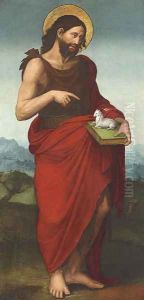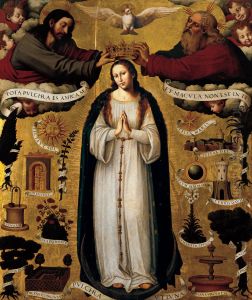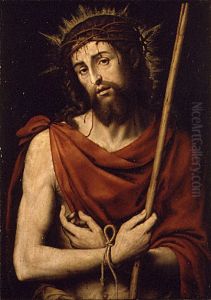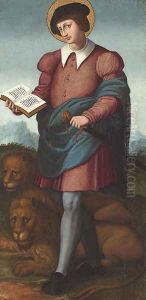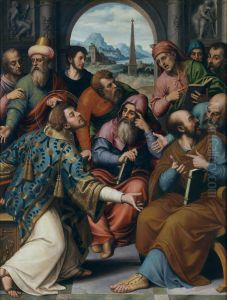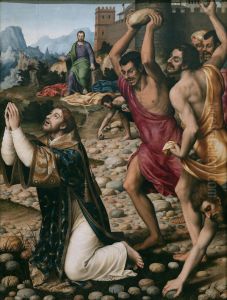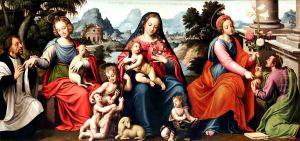Juan De Juanes Paintings
Juan de Juanes, born Vicente Juan Masip (or Macip) in 1523 in La Font de la Figuera, Valencia, Spain, was a Spanish painter of the Renaissance period. He is renowned for his contributions to Spanish art, particularly in religious painting, and is often considered the Spanish counterpart to the Italian Raphael. Juanes is noted for his refined and spiritual works, which were primarily focused on religious themes, a reflection of the Counter-Reformation's influence on art during his time.
Juanes was born into an artistic family; his father, Vicente Masip, was also a noted painter, and it is believed that Juanes initially trained under his guidance. This familial tutelage laid the groundwork for his deeply religious thematic focus and his mastery of the human form and expression. Juanes furthered his artistic education by studying the works of Italian masters, incorporating Renaissance ideals of beauty, perspective, and composition into his own Spanish sensibility.
Throughout his career, Juanes became profoundly influenced by the works of Raphael and Leonardo da Vinci, integrating their techniques and styles into his own unique approach. His paintings are characterized by their serene and harmonious qualities, precise composition, and a vivid use of color that has often been compared to the Venetian school's palette. Among his most celebrated works is 'The Last Supper' (1562), which remains a seminal piece for its depiction of this biblical scene, showcasing Juanes' skill in composition and his ability to convey the narrative through art.
Juanes' contribution to Spanish art extends beyond his paintings; he played a significant role in introducing Renaissance ideals and techniques to Valencia, influencing a generation of Spanish artists. His works were not only confined to religious subjects but also included portraits and mythological themes, demonstrating his versatility as an artist. Despite his success, Juanes remained in Spain for most of his life, where he enjoyed the patronage of the Spanish nobility and the church.
He died in Bocairente (Valencia) in 1579, leaving behind a legacy that cemented his position as one of the leading figures of the Spanish Renaissance. His artistry continued to influence Spanish painting long after his death, particularly in the development of the Valencian school of painting. Today, Juan de Juanes is celebrated for his ability to blend the spiritual with the human, creating works that resonate with a profound sense of devotion and beauty.
